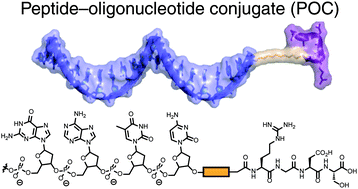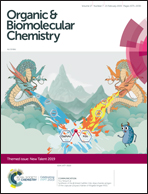Emerging applications of peptide–oligonucleotide conjugates: bioactive scaffolds, self-assembling systems, and hybrid nanomaterials
Abstract
Peptide–oligonucleotide conjugates (POCs) are covalent constructs that link a molecule like DNA to a synthetic peptide sequences. These materials merge the programmable self-assembly of oligonucleotides with the bioactivity and chemical diversity of polypeptides. Recent years have seen the widespread use of POCs in a range of fields, driven the by relative advantages of each molecular type. In this review, we will present an overview of the synthesis and application of POCs, with an emphasis on emerging areas where these molecules will have a unique impact. We first discuss two main strategies for synthesizing POCs from synthetic monomers such as phosphoramidites and functionalized amino acids. We then describe four key fields of research in POCs: (1) biomaterials for interfacing with, and controlling the behavior of cells; (2) hybrid self-assembling systems that balance peptide and oligonucleotide intermolecular forces; (3) template-enhanced coupling of POCs into larger molecules; and (4) display of peptides on self-assembled oligonucleotide scaffolds. We also highlight several promising areas for future applications in each of these four directions, and anticipate ever increasing uses of POCs in interdisciplinary research.

- This article is part of the themed collections: Chemical Biology in OBC and New Talent


 Please wait while we load your content...
Please wait while we load your content...
